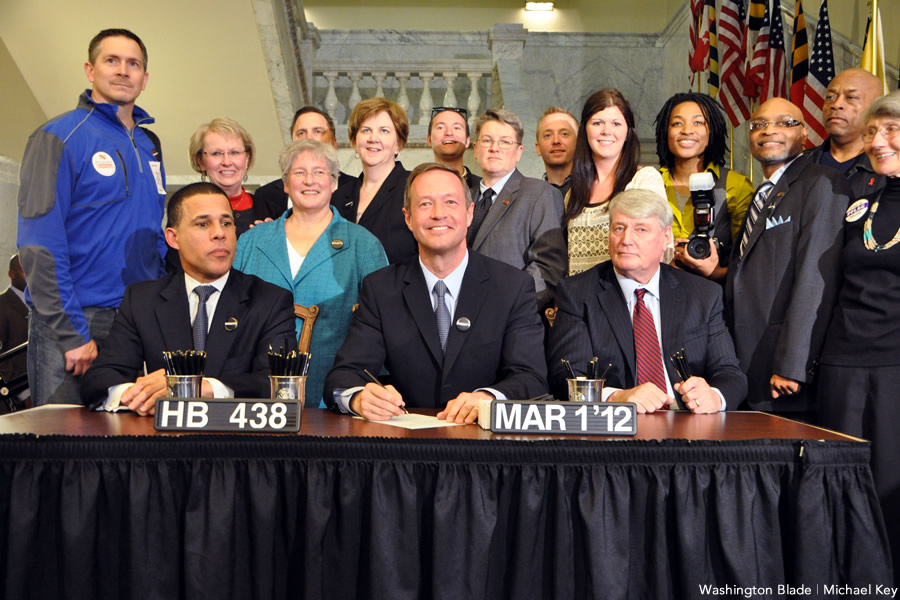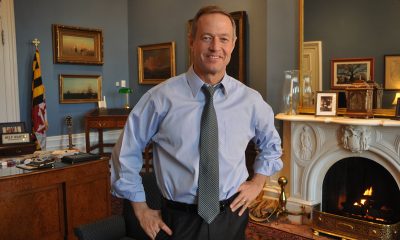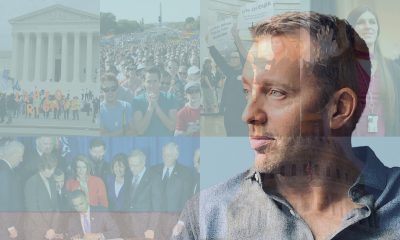Arts & Entertainment
Anatomy of a victory
Behind the scenes of the Maryland marriage battle
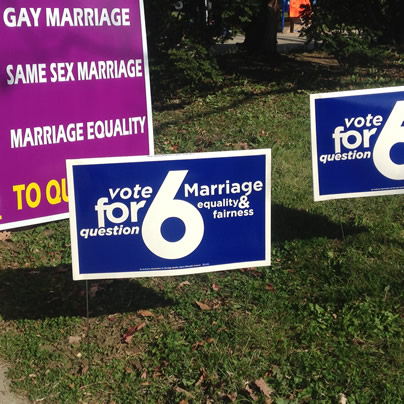

Question 6 supporters and opponents placed signs outside Northwood Elementary School in Baltimore on Nov. 6. (Washington Blade photo by Michael K. Lavers)
Edgewater, Md., residents Adri Eathorne and Kim-May Hinken arrived at Anne Arundel Medical Center in Annapolis to visit their friend, Scott Bowling, shortly before the polls closed at 8 p.m. on Election Day. The three of them nervously awaited the results of the referendum on Maryland’s same-sex marriage law as the slowly began to trickle in.
More than four hours later, they learned Question 6 had narrowly passed.
“We closed his hospital room door,” Eathorne, who has been with Hinken nine years, says. “We closed his hospital room door so we could [yell] ‘Yeah!’ and high-five each other and hug and kiss and cry.”
The passage of Question 6 by a 52-48 percent margin on Nov. 6 capped off an anxious night of waiting for the hundreds of people and dozens of reporters who had gathered at the Baltimore Soundstage.
One of Gov. Martin O’Malley’s staffers wrote on a napkin during lunch on Election Day that the referendum would pass with 53 percent support. Congressman Elijah Cummings made the same prediction during an interview with the Washington Blade earlier in the day outside a Northeast Baltimore polling place at which the governor, Baltimore Mayor Stephanie Rawlings-Blake and Brendon Ayanbadejo of the Baltimore Ravens greeted voters.
“I had a pretty good sense as we were heading into Election Day that it was going to hold,” O’Malley said in a Blade interview this week. “I had a pretty good sense in the course of those last 10 days that it was on a good positive trajectory.”
Josh Levin, campaign manager for Marylanders for Marriage Equality, was backstage with the governor, Rawlings-Blake and several other elected officials watching the results come in. President Obama had already won re-election by the time Politico reported shortly before midnight that Question 6 had passed with 84 percent of precincts reporting.
Levin and others remained hesitant to declare victory because Montgomery County had yet to report election results. (Question 6 passed in the county by a 65-35 percent margin.)
“Once we figured that out then I started breathing a little more deeply,” O’Malley says. “Then when the Montgomery County numbers came in and we were up to 51 [percent,] the night seemed to be coming into perspective. We were very reluctant to claim a victory of course until we had enough of the numbers in.”
Levin last week, while cleaning out Marylanders for Marriage Equality’s Baltimore office, says Question 6 was leading throughout the night.
“We watched it grow to 45,000 votes or so,” he says. “It shrank at one point to about 12,000. But right around midnight we felt like we had a pretty good sense of where things were. And so I went back to talk through what still could happen, what’s still out, where do we think that’s coming from and made the decision to go up on stage and declare victory from there.”
“There was confidence once the results started to come in,” says gay state Sen. Rich Madaleno (D-Montgomery County.) “There was confidence all night long, it’s just a matter of when do you say it. And because we had never won before, there’s no desire to jinx yourself. I think you’re more cautious than you would have ever been.”
The Washington Post projected Question 6 had passed just as O’Malley, Rawlings-Blake, Levin and others took to the stage to declare victory. Those gathered inside the Baltimore Soundstage became euphoric when lesbian state Del. Maggie McIntosh (D-Baltimore City) announced the referendum had passed. People began to cry. Gay state Dels. Luke Clippinger (D-Baltimore City) and Heather Mizeur (D-Montgomery County) were among those who started dancing once the governor and other dignitaries stepped away from the podium.
O’Malley instrumental in fundraising
Election Day capped off a long and often tumultuous effort for Maryland’s same-sex marriage advocates that began in 1997 when three state lawmakers introduced the first bill that would have allowed nuptials for gays and lesbians.
Equality Maryland, which nearly closed in June 2011, and the American Civil Liberties Union in 2004 filed a lawsuit on behalf of Lisa Polyak and Gita Deane and eight other same-sex couples and a gay widow who sought the right to marry in the state. The Maryland Court of Appeals in 2007 ultimately upheld the constitutionality of the state’s ban on marriage for gays and lesbians.
State lawmakers in 2011 narrowly defeated a same-sex marriage bill, but legislators approved it in February. O’Malley signed the law on March 1.
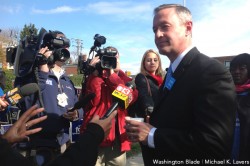
Governor Martin O’Malley speaks to reporters outside Northwood Elementary School in Baltimore on Nov. 6. (Washington Blade photo by Michael K. Lavers)
The governor soon emerged as the law’s most prominent supporter, especially after the Maryland Marriage Alliance collected more than 160,000 signatures to force a referendum on the issue. Marylanders for Marriage Equality turned to O’Malley, among others, in early August to help bolster their then-anemic fundraising efforts.
“We found ourselves in a situation where polling looked good, we felt good about what we were building, but we simply weren’t bringing in money at the rate that we needed to,” Levin says. “We as a campaign and with our board members we sort of rang the bell a little bit and talked to the governor, got Maggie McIntosh more involved. The ACLU redoubled their efforts. And I think brought to bear all the efforts that helped us [reach] the financial goals that we needed to.”
Levin said in June his group could effectively defend the law with between $5-$7 million, in spite of some observers who said Marylanders for Marriage Equality needed to raise up to $12 million.
O’Malley headlined a star-studded fundraiser gay former Republican National Committee Chair Ken Mehlman co-hosted at a New York City hotel in September that raised more than $100,000 for the pro-Question 6 group. The governor also appeared at an Oct. 2 fundraiser with D.C. Mayor Vincent Gray and House Minority Whip Steny Hoyer (D-Md.) at gay Democratic lobbyist Steve Elmendorf’s Logan Circle home. Former National Football League Commissioner Paul Tagliabue and his wife Chan announced a $100,000 donation to Marylanders for Marriage Equality during the fundraiser that Chip DiPaula, Jr., former Gov. Bob Ehrlich, Jr.’s gay chief-of-staff, attended alongside Mizeur and others.
The Human Rights Campaign contributed more than $1.5 million in cash and in-kind contributions to the pro-Question 6 campaign. Freedom to Marry, which initially declined to join the coalition defending the state’s same-sex marriage law, said it invested more than $200,000 into the campaign. This figure includes the $70,000 it gave that helped Marylanders for Maryland Equality air their radio ad highlighting President Obama’s support of marriage rights for same-sex couples in the days leading up to Election Day.
“HRC provided so much of the backbone to this whole effort,” Madaleno says. “They were absolutely critical.”
Marylanders for Marriage Equality ultimately raised $6 million — they consistently outraised the Maryland Marriage Alliance throughout the Question 6 campaign. The ACLU and other organized labor groups contributed more than $1 million to Marylanders for Marriage Equality.
New York City Mayor Michael Bloomberg and Republican hedge fund manager Paul Singer both donated $250,000 to the pro-Question 6 campaign. The bulk of the 11,000 people who contributed to Marylanders for Marriage Equality, however, live in Maryland.
“We proved from going to the state that nobody thought could win to being the second-widest margin after Maine among the four is pretty cool,” Levin says. “And I want to really say the team that was here through the legislative campaign that figured out, that believed in doing Maryland when nobody else did — the leadership of folks like Sultan [Shakir] and Kevin [Nix], Rich Madaleno and Luke Clippinger and all the others.”
One of the proudest moments of the campaign for Levin came when Marylanders for Marriage Equality was able to counter a Maryland Marriage Alliance television ad that claimed Question 6 would force schools to teach same-sex marriage with their own ad eight hours later that featured Baltimore County teacher Pamela Gaddy. Levin showed it to McIntosh, HRC President Chad Griffin, former O’Malley adviser Joe Bryce and his wife Kristen and a handful of others shortly after he arrived at a campaign fundraiser at DiPaula’s home before he put it on the air on Oct. 26.
“We were ready and able to do it that fast, versus the stories that so many other folks who worked in California [on the campaign against Proposition 8] told just having to figure it out there,” Levin says. “The lessons they learned they gave us and we applied. And we took a Maryland angle on it, putting up an African-American, Baltimore-area schoolteacher to just go, ‘That’s not true, you know.’ When we looked at it a week later, their argument wasn’t resonating. People just weren’t buying it, according to our research.”
Obama, NAACP endorsements key
O’Malley, Levin and Mizeur all noted Obama’s public support of marriage rights for gays and lesbians and his endorsement of the same-sex marriage law garnered additional support among black Marylanders.
In addition to the radio ad featuring the president, Marylanders for Marriage Equality also sent a mailing that contained his and first lady Michelle Obama’s statements in support of marriage rights for same-sex couples to 200,000 African-American households in the state. (Baltimore Black Pride co-chair Meredith Moise was handing out these fliers on Election Day as she spoke with voters outside a polling place at a Northeast Baltimore elementary school.)
“It was important that we echoed their support,” Levin says.
The NAACP’s support of Question 6 and particularly television ads that featured Julian Bond, the civil rights organization’s chair emeritus, and Revs. Delman Coates of Mount Ennon Baptist Church in Clinton and Donté Hickman of Southern Baptist Church in Baltimore appear to have resonated with voters in the predominantly black Charm City.
Question 6 passed by a 57-43 percent margin in Baltimore City. It lost by slightly more than 4,300 votes in Prince George’s County.
A Public Policy Polling survey in May found 55 percent of black Marylanders would vote for the law, compared to 36 percent who said they would oppose it. A Hart Research Associates survey conducted in late July found 44 percent of African-American voters would support Question 6, compared to 45 percent who said they would vote against it. A Gonzales Research poll in September noted 44 percent of black Marylanders backed marriage rights for same-sex couples, compared to 52 percent who oppose nuptials for gays and lesbians. An Associated Press exit poll indicates roughly half of black Maryland voters voted against Question 6.
Maryland Marriage Alliance Chair Derek McCoy, Bishop Harry Jackson, Jr., of Hope Christian Church in Beltsville and others who opposed the law repeatedly criticized and even mocked the NAACP, Obama, Coates, Hickman and other prominent black leaders who backed marriage rights for same-sex couples in the state. Some Question 6 opponents resorted to increasingly homophobic rhetoric during appearances at black churches and other public forums in the weeks leading up to Election Day. Pastor Luke Robinson of Quinn Chapel AME Church in Frederick even suggested during a sparsely attended rally against the same-sex marriage law at a city park on Nov. 4 that Superstorm Sandy struck New York City less than three weeks after Bloomberg donated $250,000 to Marylanders for Marriage Equality.
“It pretty clearly was having an effect,” Levin says. “I don’t think the other guys would have been bringing it up as often if it hadn’t been.”
The Maryland State Conference of the NAACP and the organization’s Prince George’s County and Baltimore branches in particular factored prominently in the pro-Question 6 campaign.
Bob Ross, president of the Prince George’s County Branch of the NAACP, organized phone banks and canvassing efforts ahead of Election Day. He also spoke about his gay brother who had lived in the closet for years during a Nov. 5 rally at the University of Maryland in College Park that O’Malley, Hoyer, Madaleno, state Sen. Allan Kittleman (R-Carroll and Howard Counties) and others attended.
“Surely we need to recognize not only the importance of their endorsement, but the amount of work that they did,” Levin says.
Couples busy planning weddings
With all the behind-the-scenes work that led to the passage of Question 6, the only thing that matters to those who plan to take advantage of the law once it officially takes effect on Jan. 1 is the fact they can legally marry the person they love.
“It was kind of like, ‘Oh my God, what are we doing about our wedding plans?’” says ShaDonna Jackson, a Hyattsville, Md., resident who plans to wed her partner of nearly four years, Latisha Smith. “We needed absolute certainty because it’s a serious matter. It’s like, ‘Oh my goodness everything depends on this, so we need to know.’ And now that we know, we are back to our wedding plans.”
Eathorne and Hinken, who chairs the annual Chesapeake Pride Festival, are planning to get married in Annapolis on the first day same-sex couples can legally marry in the state.
“We’ve waited so long for it to be legal in our home state that we really wanted to do it as soon as possible,” Eathorne says (they had a church wedding in 2007). Hinken also spoke in support of the same-sex marriage bill in front of the State House in Annapolis. “We just want to make that statement. And that’s one of the reasons why we want it to be ASAP. We’ve been together for nine years. We don’t need a big full-blown wedding. We had our thing. It is special and we do plan to acknowledge it and celebrate it in some way.”
Madaleno, who once again proposed to his husband Mark on stage at the Baltimore Soundstage after Question 6 passed, plans to have what he describes as their “renewal of vows” once they and their two children return from a family vacation at Walt Disney World in Florida in January. The couple married 11 years ago at their Bethesda church, but Madaleno said having the legal recognition will make it even more official.
“What will be different,” he says, “is we’re getting a license.”
Television
ICYMI: ‘Overcompensating’ a surprisingly sweet queer treat
A sweet, savvy show about breaking free to embrace your true self
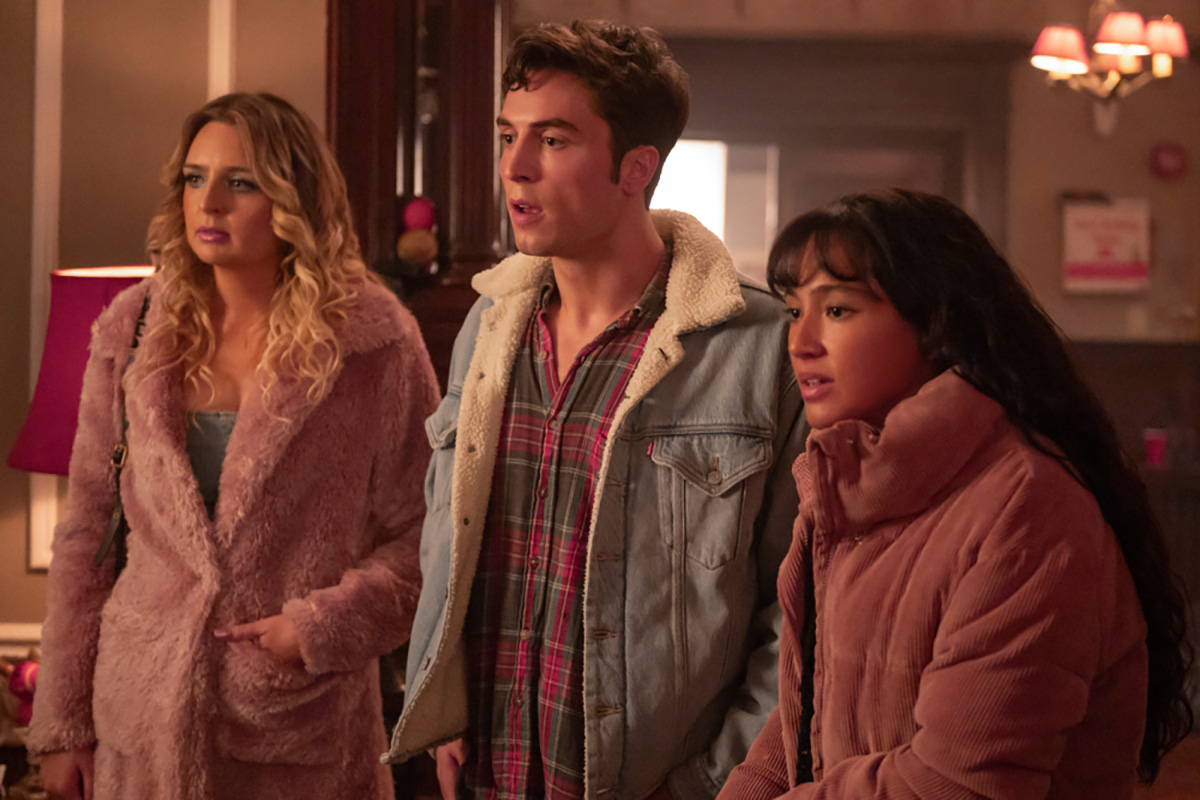
Pride month 2025 is now behind us, and while it’s safe to say that this year’s celebrations had a darker edge than usual, it’s also true that they came with a particularly rich bounty of new queer movies and shows to entertain us – so many, in fact, that even if we are facing a lull until the fall another harvest of fresh content, there are still plenty of titles – which, for whatever reason, were off your radar – for you to catch up on in the meantime.
One of the most notable of these – the bingeworthy series “Overcompensating” (now streaming on Amazon Prime) – will most definitely have been ON the radar for the plentiful fans of creator and star Benito Skinner, the actor/comedian who rose to viral fame through his content on platforms like Instagram, YouTube, and TikTok. For anyone else, it might have easily slipped through the cracks.
Created and written by Skinner as a loosely autobiographical “college comedy,” it aims for the kind of raucous, explicitly sexed-up tone one expects from the genre as it centers on Benny (Skinner), newly arrived as a freshman at prestigious Yates University. A former football jock and “golden boy” at his midwestern high school, he’s the picture of idealized youthful masculinity; he’s also deep in the closet, struggling to keep his sexuality hidden and maintain his macho front under the intense scrutiny of the college’s social scene – and under the resentful eye of his older sister Grace (Mary Beth Barone), who has already secured her own place at the top of the pecking order.
In the first episode, Benny’s difficulties are eased when he meets Carmen (Wally Baram), another freshman trying to navigate the politics of college life; a gamer from a home marred by tragedy, she’s an outsider who feels like she’s putting on an act, too, and they click – giving him the convenient “cover” of female companionship while providing them both with much-needed support and encouragement. He’s also befriended by a handsome film major from England (Rish Shah), who has already caught his eye, stirring other kinds of feelings and possibly even reciprocating them. Meanwhile, he’s being courted by the school’s “exclusive secret society” – headed by his sister’s aggressively “alpha” boyfriend Pete (Adam DiMarco) – and trying to stay interested in his studies, despite a growing realization that a career in business doesn’t actually appeal to him all that much.
That’s a lot to juggle for anybody, even an overachiever like Benny – whose “lucky” life so far has largely been the result of playing a role he is finding harder and harder to maintain. As the series goes on through its eight-episode arc, it becomes clear that he’s not the only one who is “keeping up appearances,” and he, along with the other confused and damaged young people in his orbit, begins the painful (but often hilarious) process of evolution that is required in order to become truly oneself.
Directed toward appealing to a younger demographic, “Overcompensating” is the kind of show that requires a few episodes worth of invested time to make an impression that feels like substance. Full of the bawdy farcical antics that go hand in hand with stories about hormonally charged college kids, it’s not above leaning into the formulas and tropes that have always driven these kinds of comedies. At first, while its broadly comedic strokes and frequently explicit sexual hijinks might elicit plenty of chuckles, the show might easily feel tiresome for more mature audiences; there’s a nostalgic fun to it, made even more appealing, somehow, by the “political incorrectness” of its frequently sexist and homophobic humor, but for a while things may feel like an unnecessary attempt to reinvent “Animal House” for the Gen Z crowd.
By the time the season reaches its halfway point, however, things have started to get real. The antics of these horny almost-adults take on a more pointed absurdity, informed by the increasingly tangled web of defensive deceit they weave among themselves – and, as things draw toward a cliffhanger climax, the consequences of maintaining it – until it achieves a sense of empathy toward them all. There’s a wisdom that smacks of lived authenticity underlying the whole affair, transforming it from the “sexploitative” teen comedy of its surface into something deeper. To be sure, things stay expectedly wacky, and the soap-operatic melodrama of its twists and reversals continue to maintain the show’s “mature YA” appeal; but beneath those trappings, by the end of the season a truer identity has begun to emerge, just as its characters have begun to find their own levels of self-actualization for themselves.
As creator, primary writer, and star, it’s obviously Skinner who deserves much of the credit. While it might be tempting, early on, to dismiss the show as an “ego project,” the internet-spawned sensation proves his talents quickly enough to get past such judgy suspicions, delivering a pitch-perfect blend of sauciness and sensitivity that extends its appeal toward both ends of the taste spectrum; just as crucially, he brings the same aforementioned “lived authenticity” to his winning performance – after all, he’s essentially playing himself in a fictionalized version of his own life – while also making sure that equal time (and compassion) is afforded all the other characters around him, each of whom are pushing at the boundaries of their own respective “closets,” too. It’s unavoidable to notice that – like most of his co-stars – he’s plainly a decade too old to be playing a college student; but by the time we reach that crucial halfway turning point, we’ve become too engaged by him to care.
The show is full of excellent performances, in fact. Relative newcomers Baram and Barone offer layers of complex nuance, while the more familiar DiMarco (“White Lotus”) is close to heartbreaking as the toxic BMOC clinging to the illusion of power as his life begins unraveling around him. Other standouts include the mononymic actress Holmes as Carmen’s “wild child” roommate, solidly likable turns as Benny’s parents from mature veterans Connie Britten and Kyle MacLachlan (whose presence, along with stylish elements in several key scenes, hints at an homage-ish nod to the late David Lynch), and podcaster Owen Thiele as an openly gay fellow student who has Benny “clocked” from the moment they meet. Finally, Lukas Gage makes a deep impression as a former high school teammate at the heart of Benny’s most haunting memory.
There’s no official word yet on whether “Overcompensating” will be renewed for a second season, despite the multiple loose ends left dangling at the end of its first; it has proven to be popular, and Skinner’s large fanbase makes it likely that the story will continue. Even if it doesn’t, the place of uncertainty in which it has left its characters rings true enough to serve as a satisfying endpoint.
As for us, we hope that won’t happen. For all its sophomoric humor, generic plot twists, and purposefully gratuitous sexual titillation, it’s one of the sweetest, kindest, and most savvy shows we’ve seen about breaking free from conformity to embrace your true self – and that’s a message that applies whether you’re queer, straight, or anywhere in between.
Photos
PHOTOS: Independence Day Weekend in Rehoboth
Wicked Green Pool Party, fireworks among festivities
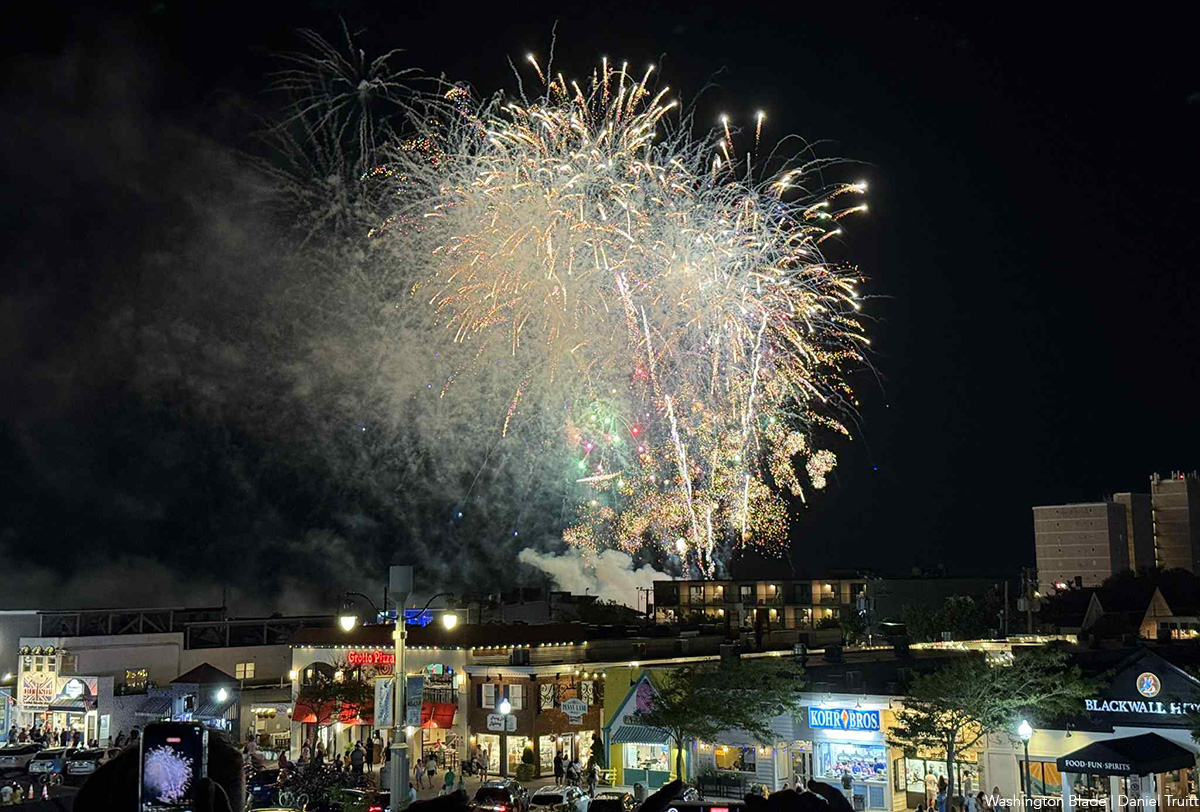
Vacationers and residents alike enjoyed Independence Day Weekend activities in Rehoboth Beach, Del. The Wicked Green Pool Party drew hundreds to the CAMP Rehoboth fundraiser on Saturday. That evening, revelers went to the rooftops to watch the fireworks display.
(Washington Blade photos by Daniel Truitt)
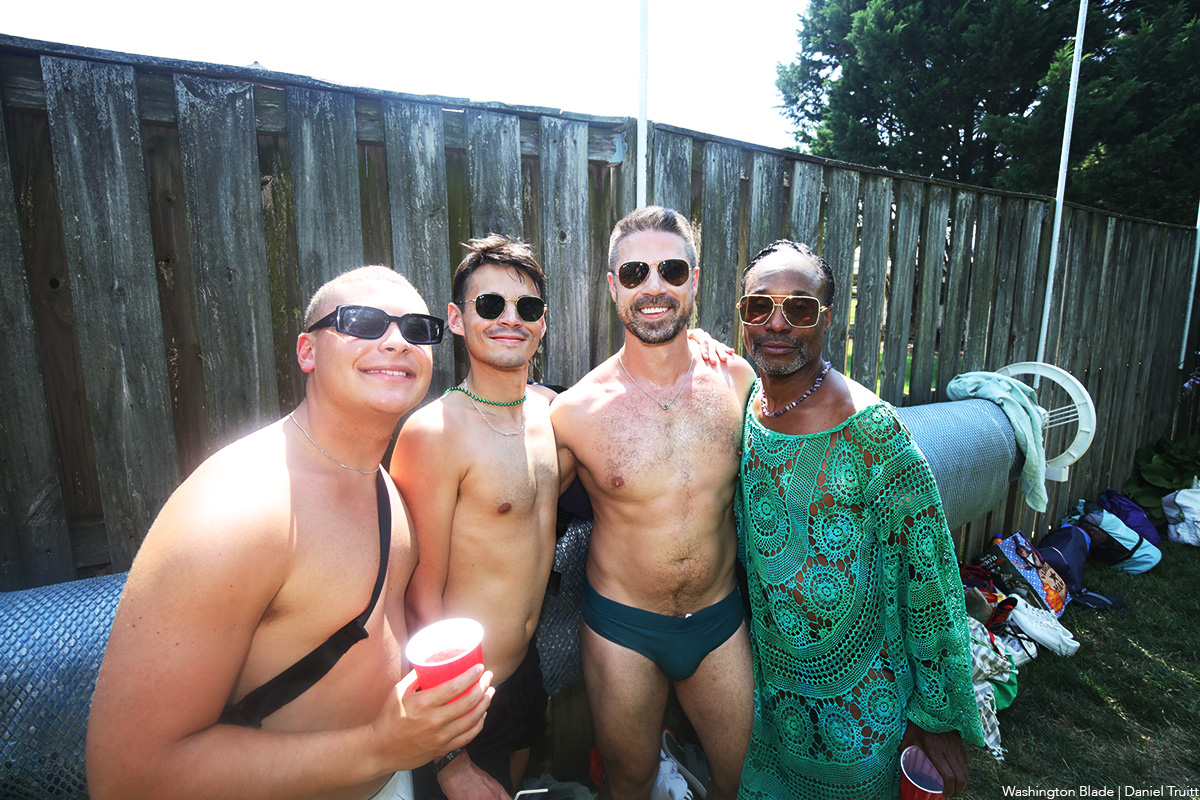

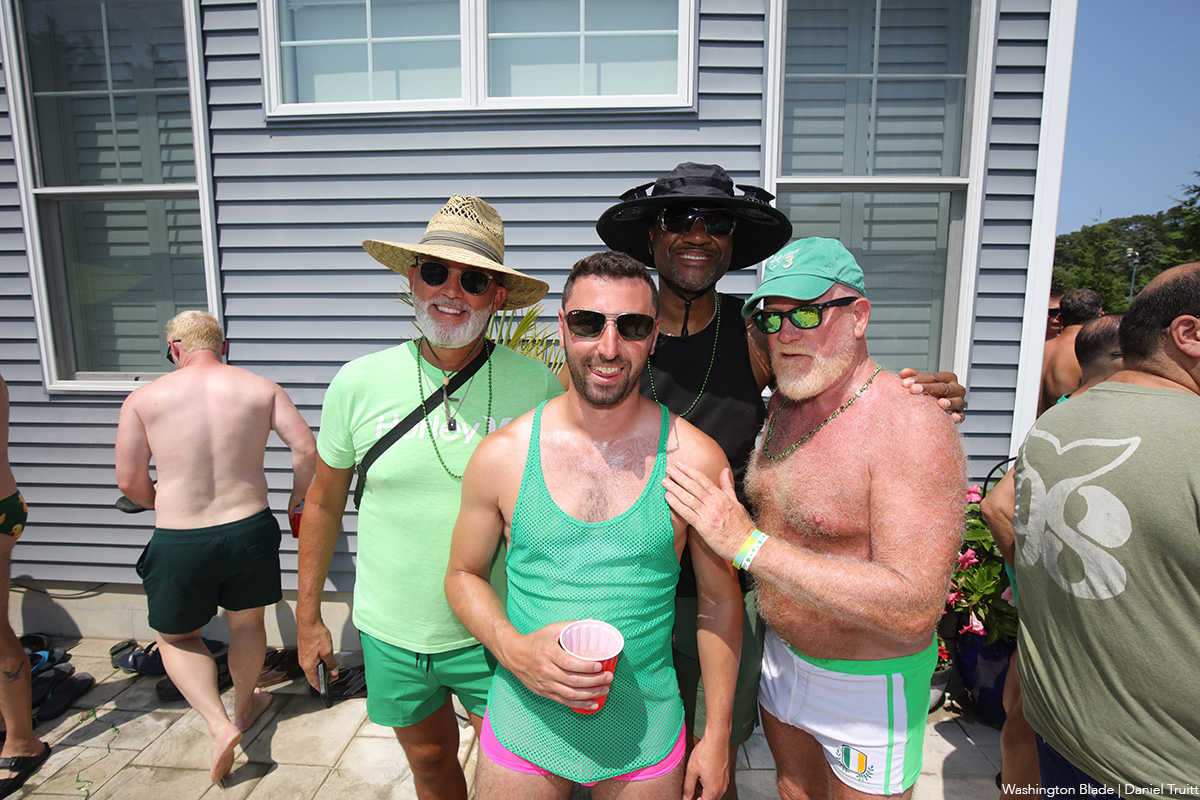
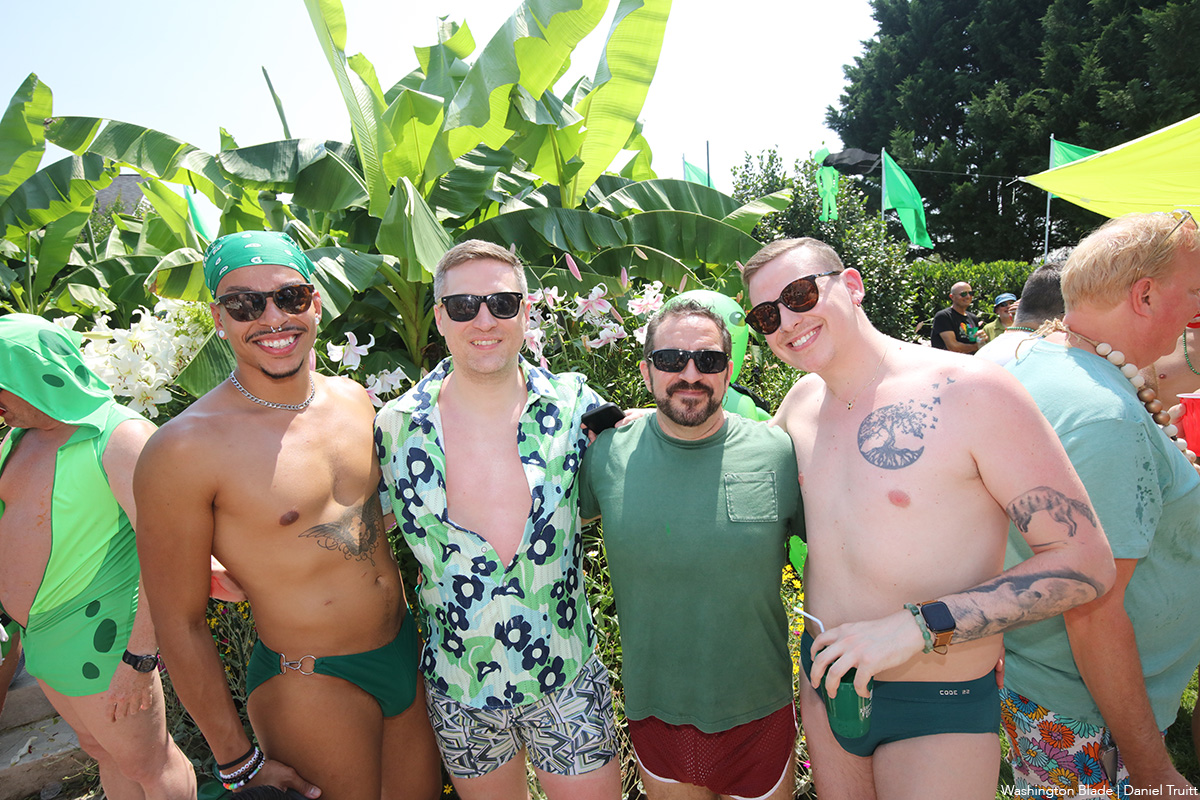
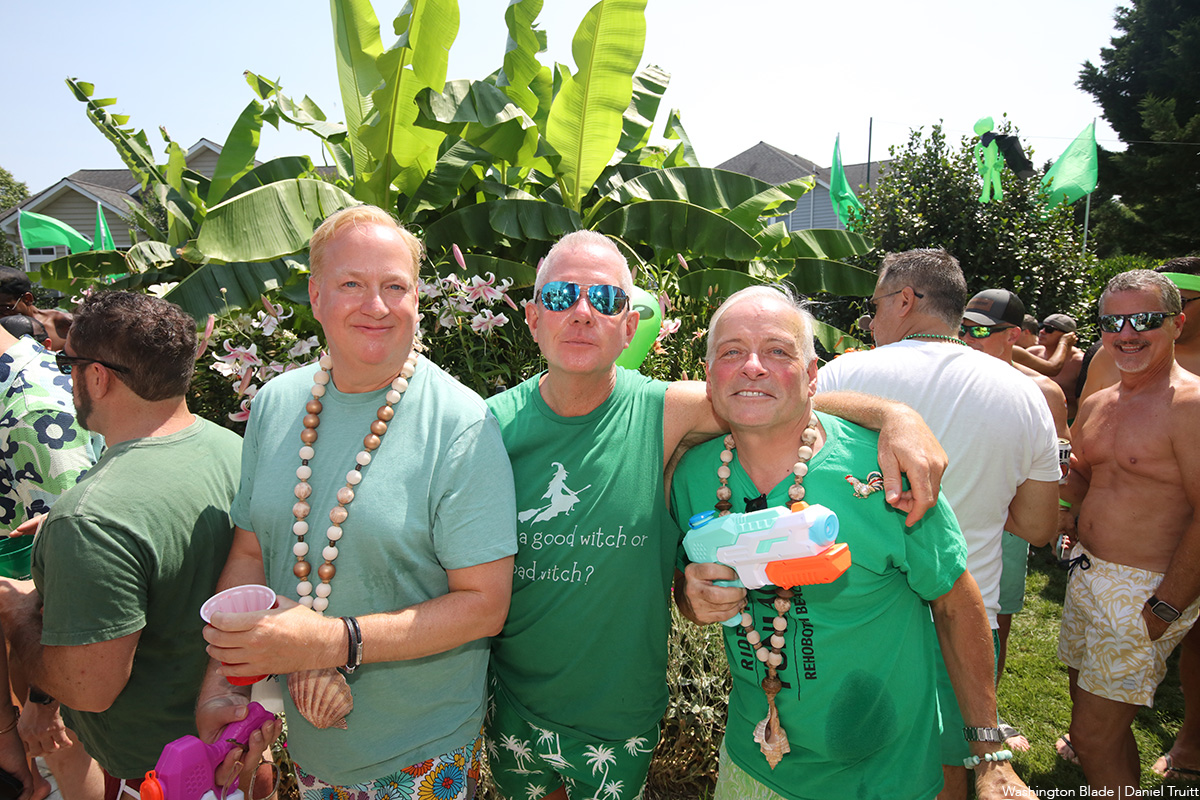
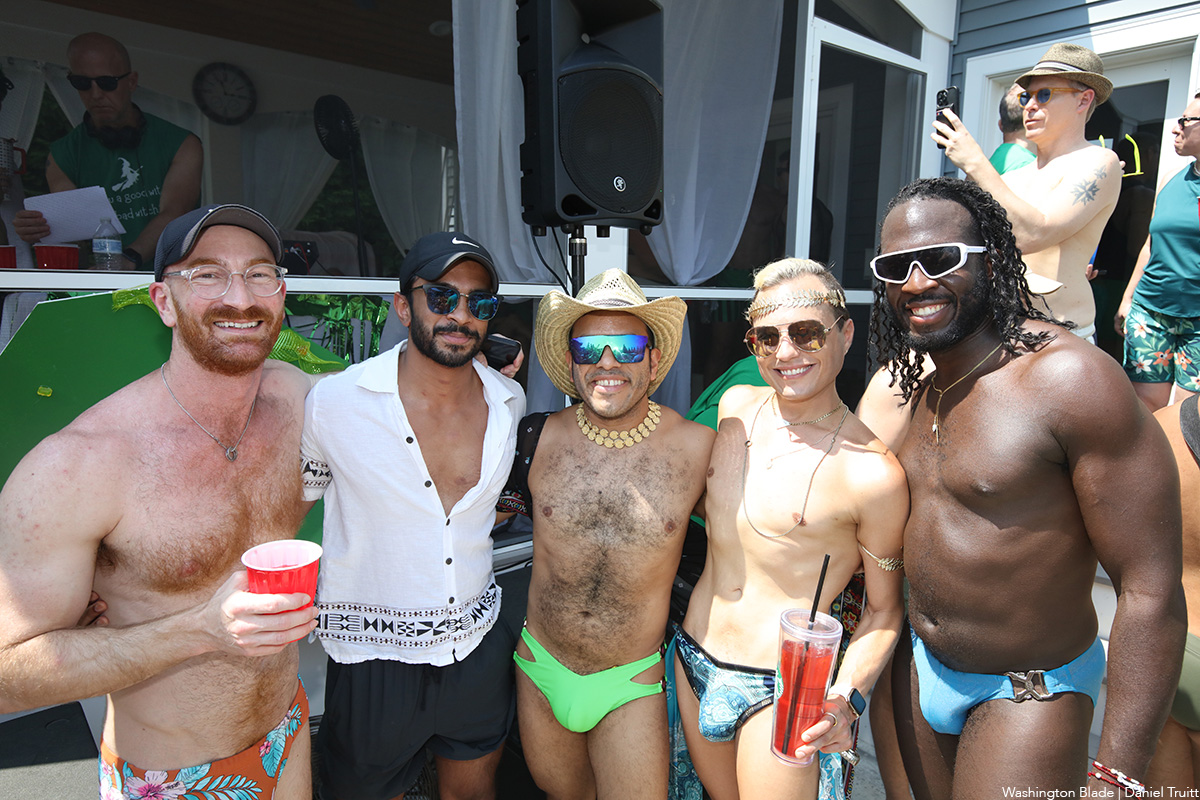
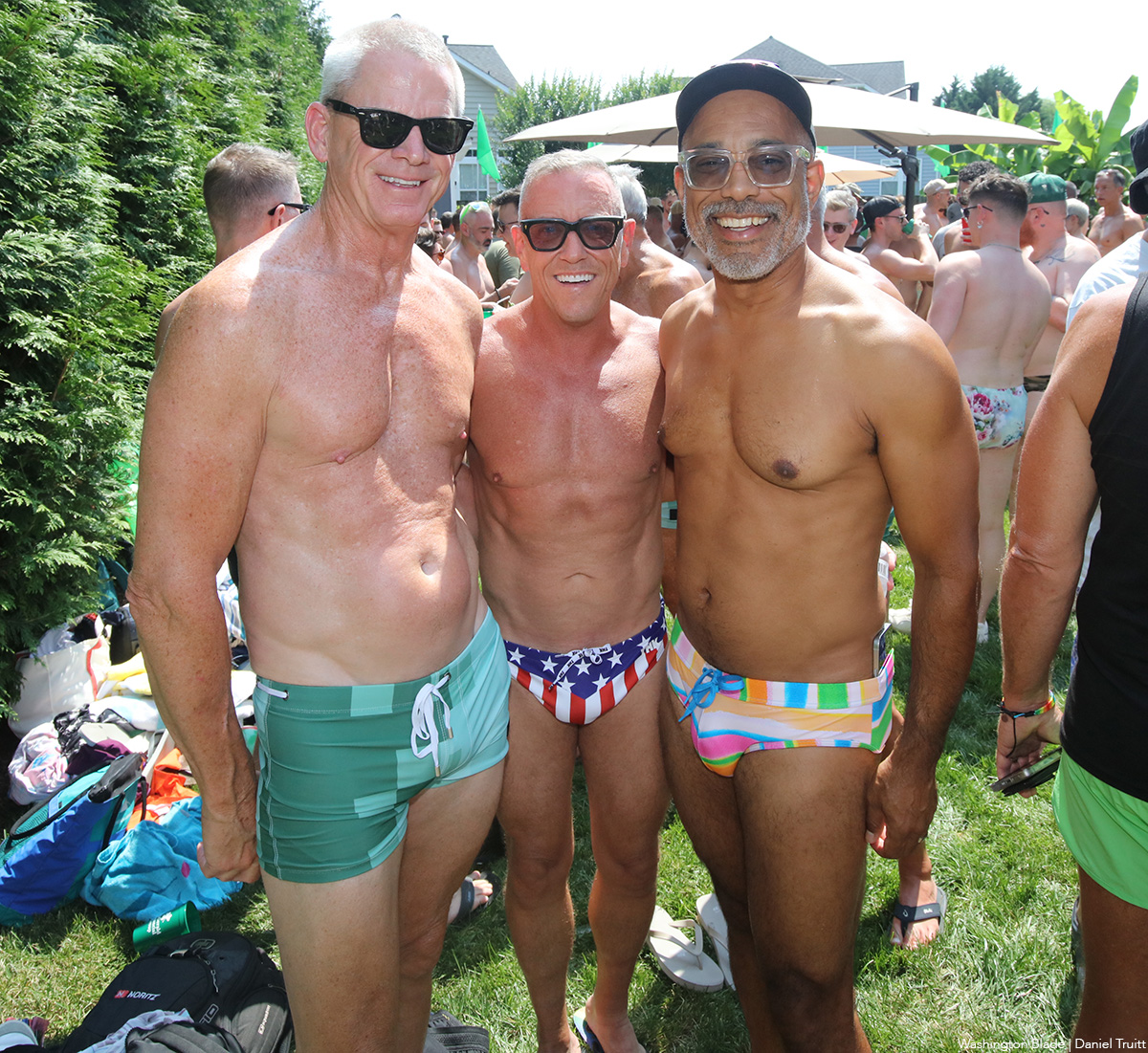
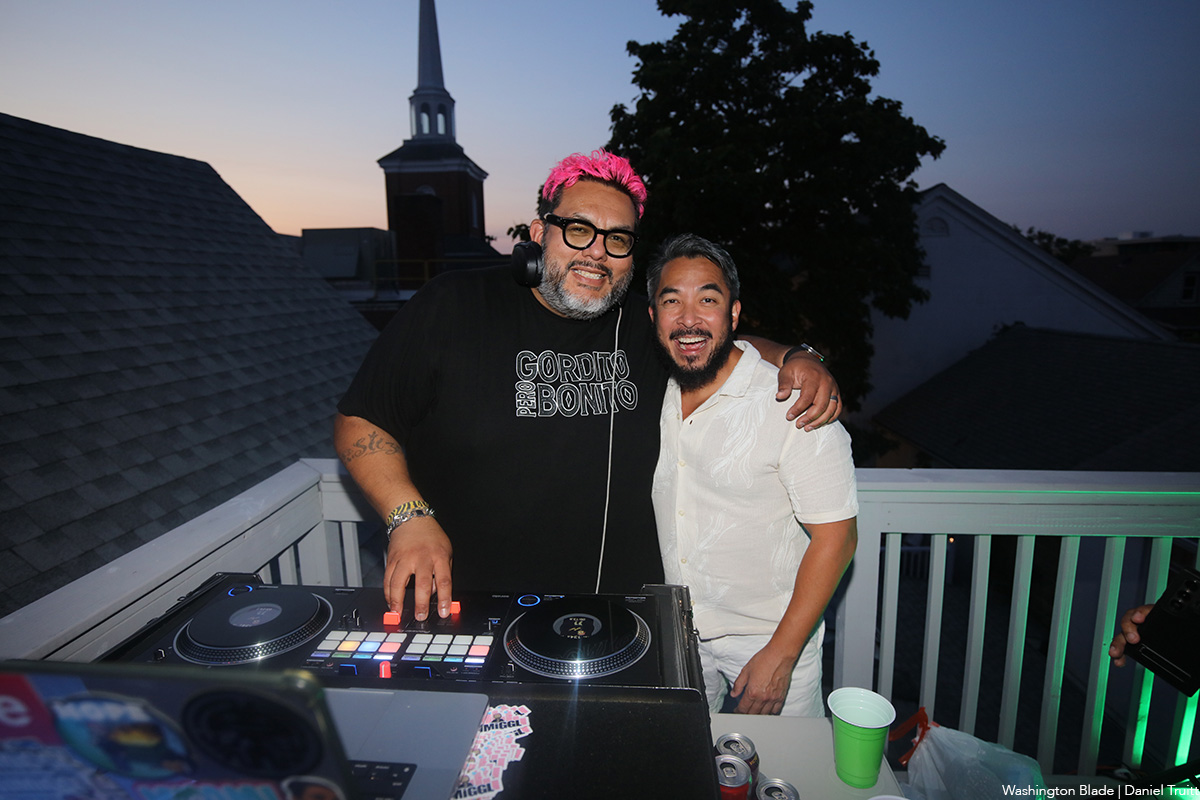

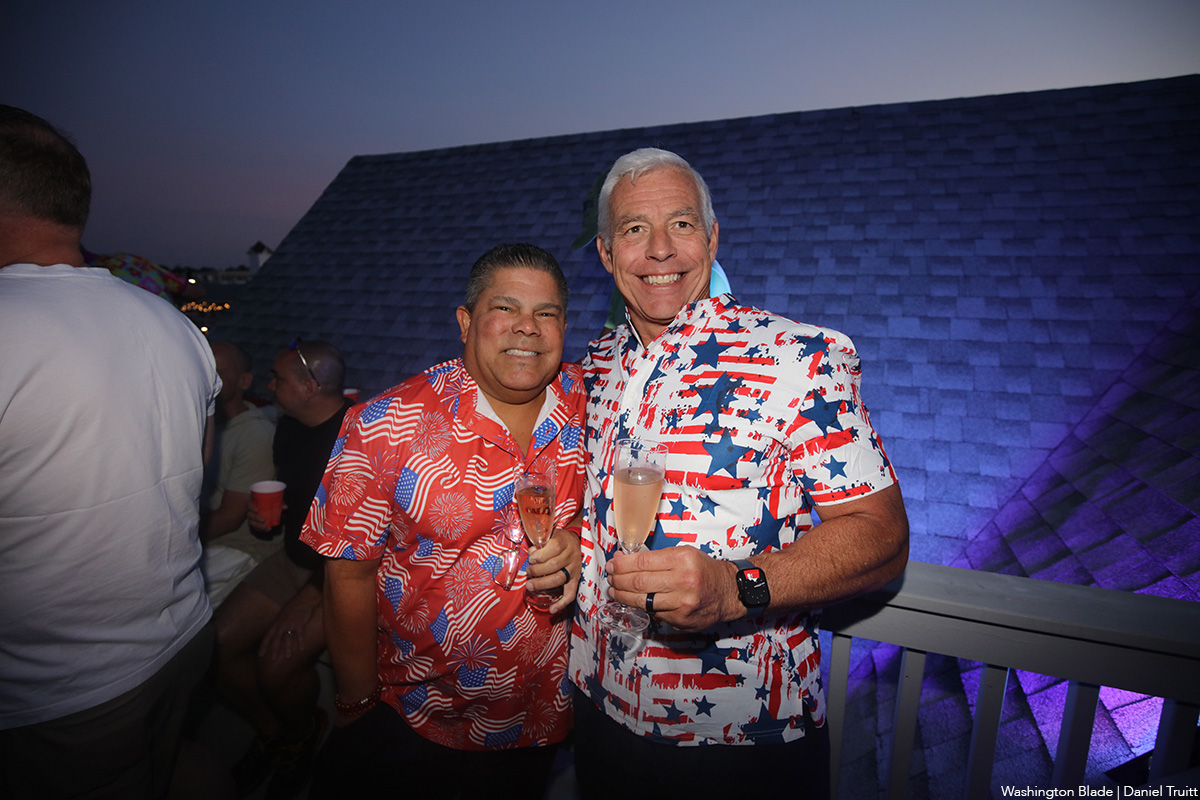
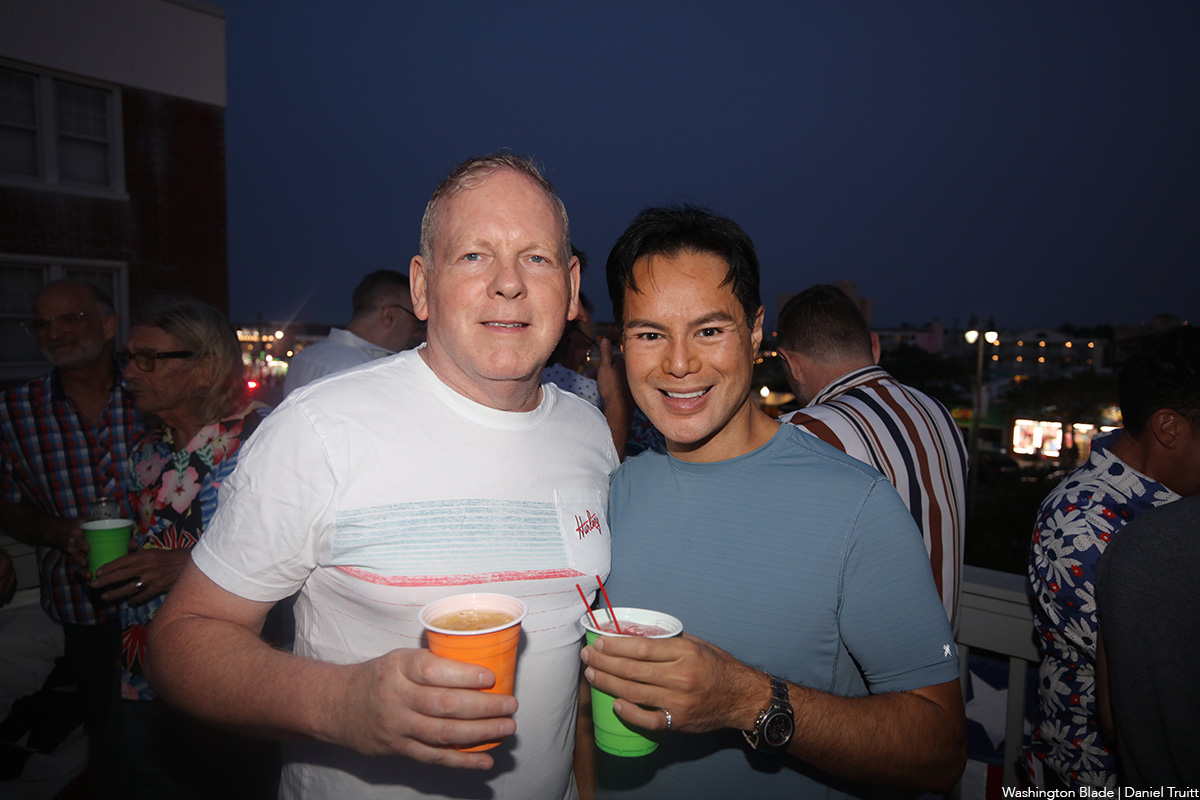
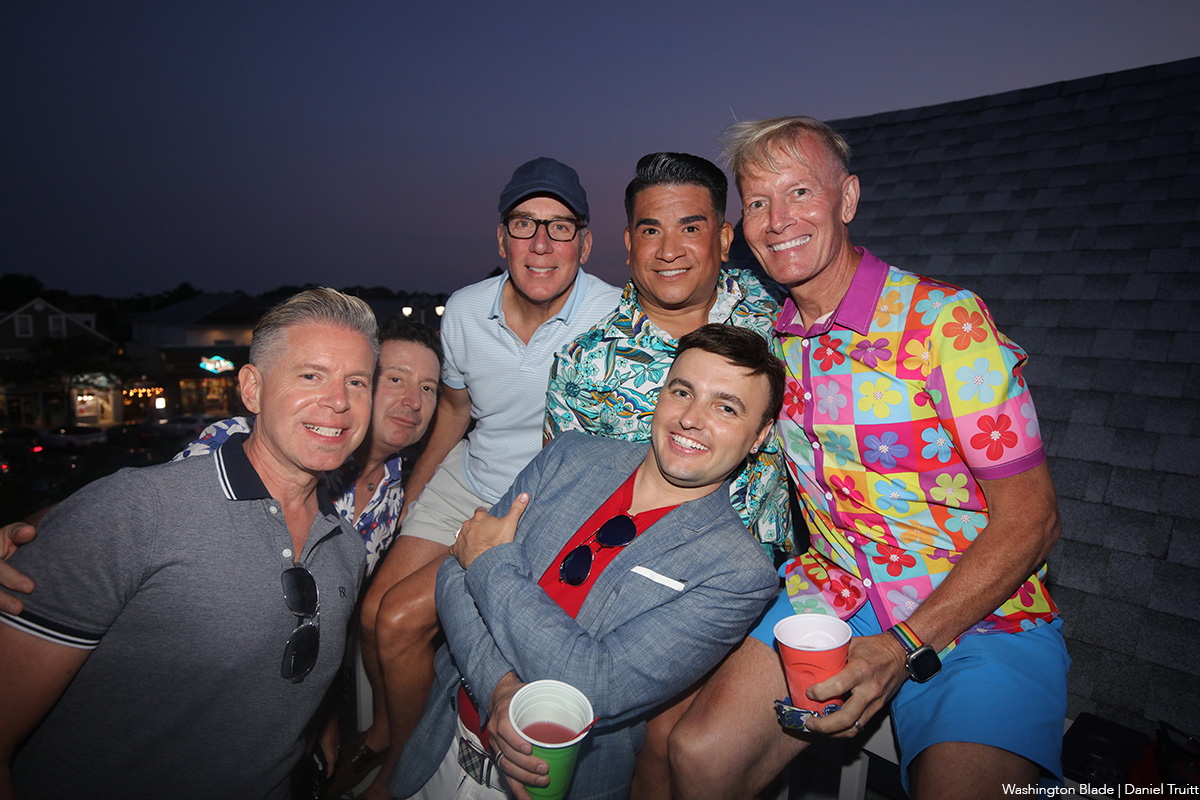
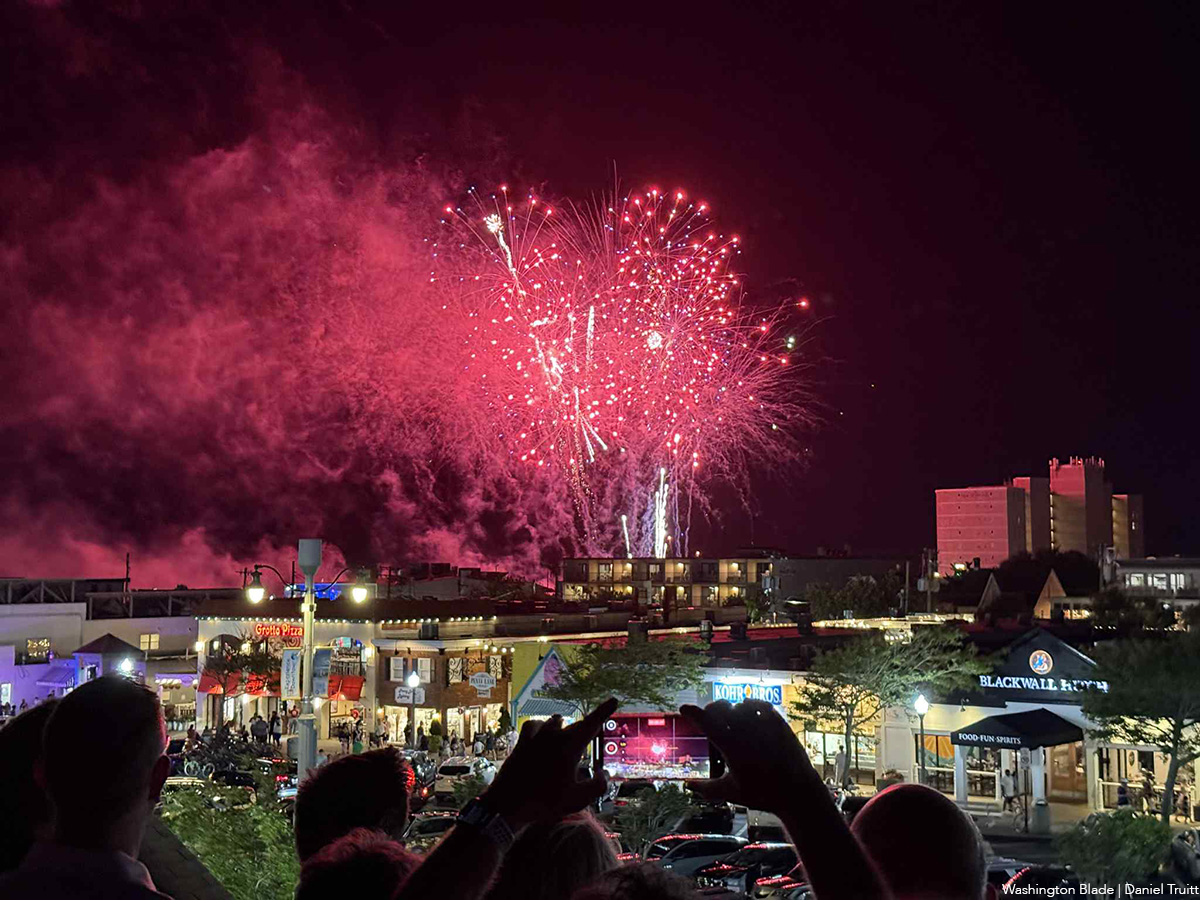
Music & Concerts
Red, White, and Beyoncé: Queen Bey takes Cowboy Carter to D.C. for the Fourth of July
The legendary music icon performed on July 4 and 7 to a nearly sold-out Northwest Stadium.
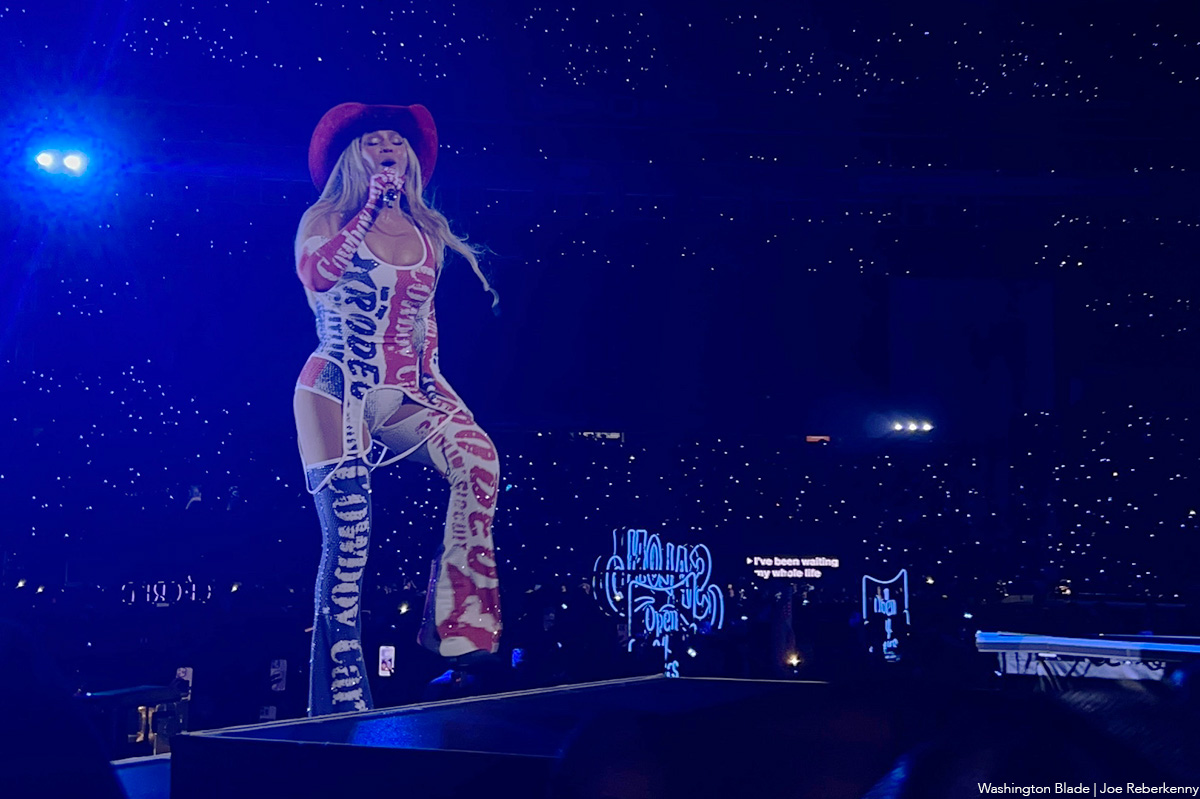
Just in time for Independence Day, Beyoncé lit up Landover’s Commanders Field (formerly FedEx Field) with fireworks and fiery patriotism, bringing her deeply moving and genre-defying “Cowboy Carter” tour to the Washington, D.C. area.
The tour, which takes the global icon across nine cities in support of her chart-topping and Grammy-winning country album “Cowboy Carter,” landed in Prince George’s County, Maryland, over the Fourth of July weekend. From the moment Beyoncé stepped on stage, it was clear this was more than just a concert — it was a reclamation.
Drawing from classic Americana, sharp political commentary, and a reimagined vision of country music, the show served as a powerful reminder of how Black Americans — especially Black women — have long been overlooked in spaces they helped create. “Cowboy Carter” released in March 2024, is the second act in Beyoncé’s genre-traversing trilogy. With it, she became the first Black woman to win a Grammy for Best Country Album and also took home the coveted Album of the Year.
The record examines the Black American experience through the lens of country music, grappling with the tension between the mythology of the American Dream and the lived realities of those historically excluded from it. That theme comes alive in the show’s opening number, “American Requiem,” where Beyoncé sings:
“Said I wouldn’t saddle up, but
If that ain’t country, tell me, what is?
Plant my bare feet on solid ground for years
They don’t, don’t know how hard I had to fight for this
When I sing my song…”
Throughout the performance, Beyoncé incorporated arresting visuals: Black cowboys on horseback, vintage American iconography, and Fox News clips criticizing her genre shift — all woven together with voiceovers from country legends like Dolly Parton and Willie Nelson. The result was a multimedia masterclass in storytelling and subversion.
The “Cowboy Carter” tour has been a social media sensation for weeks, with fans scrambling for tickets, curating elaborate “cowboy couture” outfits, and tailgating under the summer sun. At Commanders Field, thousands waited in long lines for exclusive merch and even longer ones to enter the stadium — a pilgrimage that, for many, felt more like attending church than a concert.
One group out in full force for the concert was Black queer men — some rocking “denim on denim on denim on denim,” while others opted for more polished Cowboy Couture looks. The celebration of Black identity within Americana was ever-present, making the concert feel like the world’s biggest gay country-western club.
A standout moment of the night was the appearance of Beyoncé’s 13-year-old daughter, Blue Ivy Carter. Commanding the stage with poise and power, she matched the intensity and choreography of her mother and the professional dancers — a remarkable feat for someone her age and a clear sign that the Carter legacy continues to shine.
It’s been nearly two decades since Beyoncé and Destiny’s Child parted ways, and since then, she’s more than lived up to her title as the voice of a generation. With “Cowboy Carter,” she’s not just making music — she’s rewriting history and reclaiming the space Black artists have always deserved in the country canon.
-
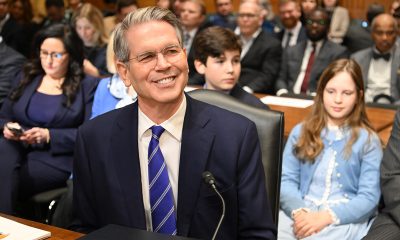
 Federal Government2 days ago
Federal Government2 days agoTreasury Department has a gay secretary but LGBTQ staff are under siege
-
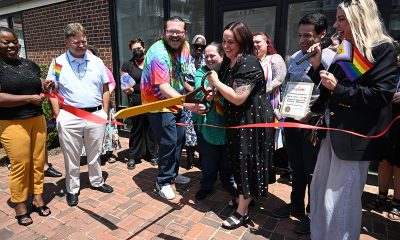
 Virginia3 days ago
Virginia3 days agoDefying trends, new LGBTQ center opens in rural Winchester, Va.
-
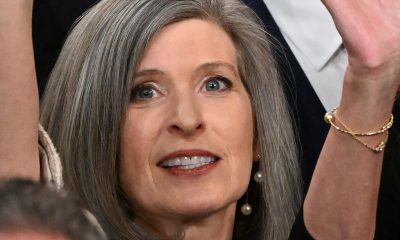
 District of Columbia2 days ago
District of Columbia2 days agoGay GOP group hosts Ernst, 3 House members — all of whom oppose Equality Act
-
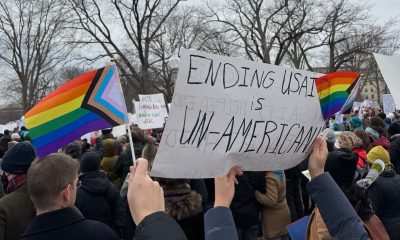
 Opinions4 days ago
Opinions4 days agoUSAID’s demise: America’s global betrayal of trust with LGBTQ people

